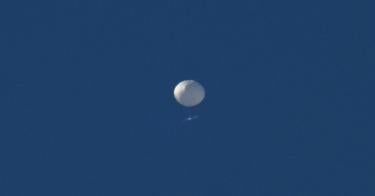In the wake of China admitting today that a large surveillance balloon flying over the U.S. was its own, critical questions arise.
What is China surveilling? How invasive is this? Is this an act of aggression? Should we believe China when it says it was an accident?
Everything Beijing does is with intention, and until we fully understand its intentions, we can’t really assess the scope of the threat.
China has very capable and growing space capability to watch what is going on here on earth. Perhaps there is some special niche need it is trying to fill with balloons. Balloons and untethered aerial surveillance and intelligence collection assets tricked out with modern technology and powered by solar panels are increasingly used by modern militaries for special missions.
It is a matter of concern that these balloons have surveilled U.S. national security targets—and not just missile fields in the Northwest—and not for the first time.
Last year, a similar balloon (that hadn’t been formally attributed to China) was spotted off the coast of Kauai, Hawaii, near the Barking Sands missile range. That’s a big deal. The range is where the U.S. tests missile interceptors and new radar systems, and it’s the home of the U.S. submarine school test range.
Reportedly, there were overflights of Guam, which also contains U.S. military facilities, and Canada, which hosts part of the U.S. strategic early warning system.
So, to be clear, the big deal is we don’t know how much of a big deal it is. And the fact that the Pentagon’s initial impulse was to downplay the incident is troubling.
The Beijing government’s claim that this was a weather balloon that drifted off course is simply not credible. What’s troubling here is that the regime believes it could spin an explanation like that and get away with it.
This is the same government that denies there is genocide against over a million Uyghurs and once claimed that COVID-19 started in Italy.
What perhaps is most troubling is not that Beijing consistently lies, but how sincerely U.S. officials like John Kerry insist we must negotiate with it in good faith on issues like climate policy.
What should our response be and when? The first and foremost step is to maximize all the intelligence we can gather to determine what the “weather balloon” actually is. It strains credulity to accept the argument that the balloon could not be safely shut down.
What’s next? Could this happen again? Absolutely. I don’t think the Chinese are afraid of this administration.
The problem here, however, is much bigger than balloons. We need to understand what’s behind the balloons—what China is up to—and put a stop to it.
How concerning is this overall? This is a big problem because this is a big signal the Biden administration has no clue how to handle the China threat. It appears about as competent securing our airspace as it does securing our border.
This piece originally appeared in The Daily Signal




